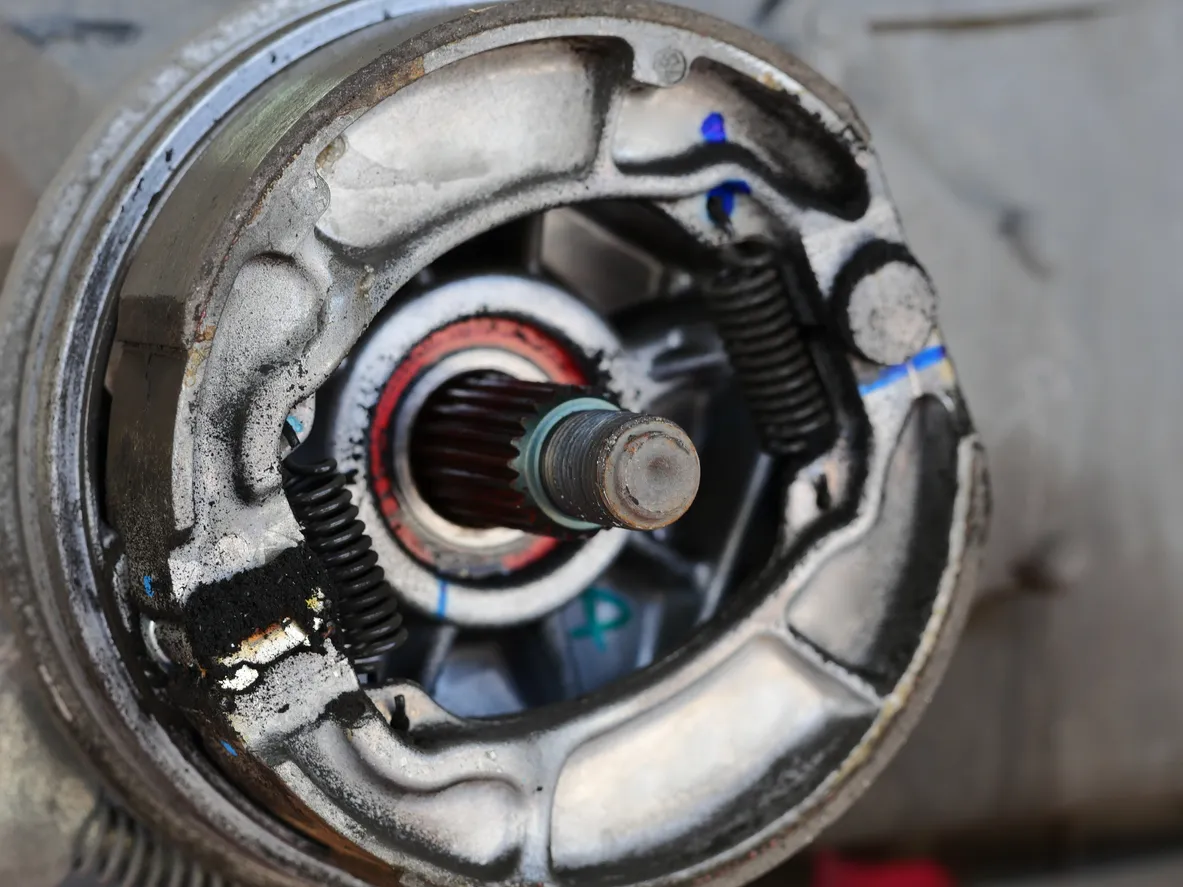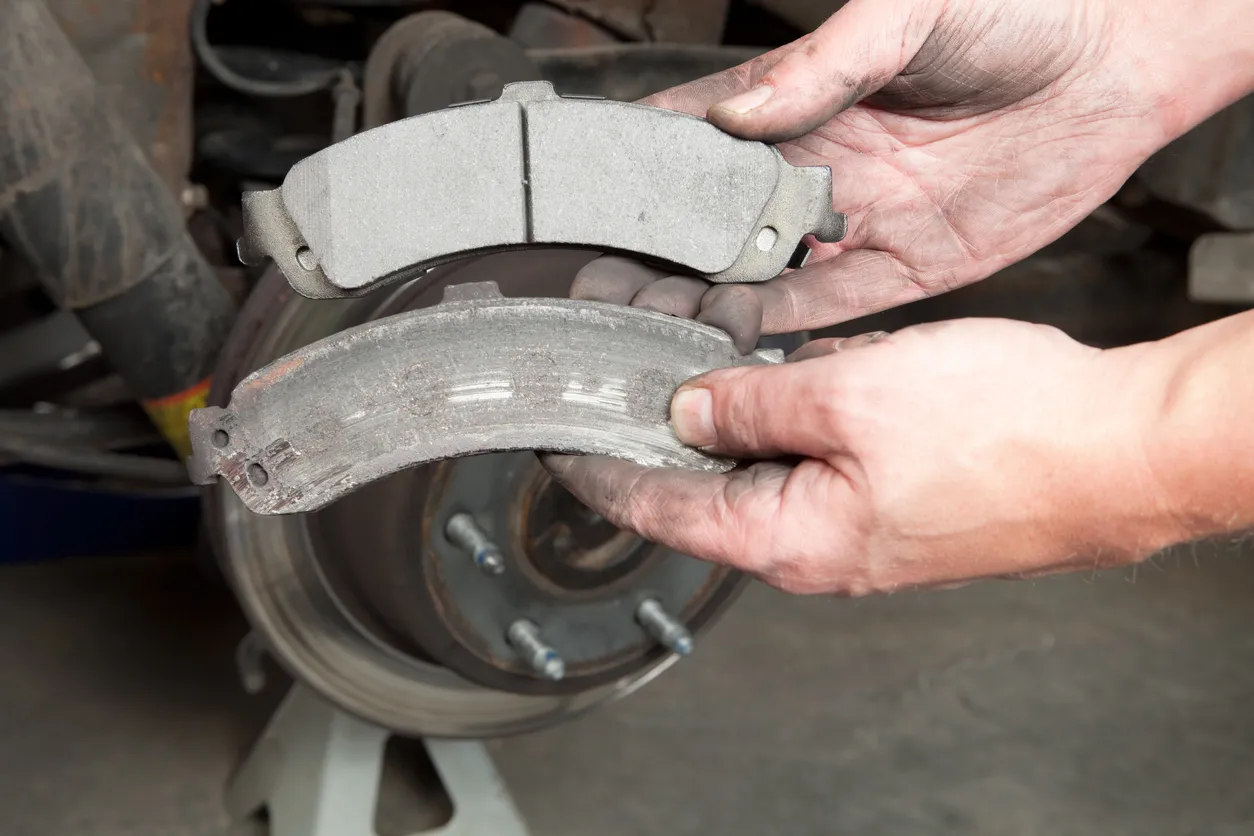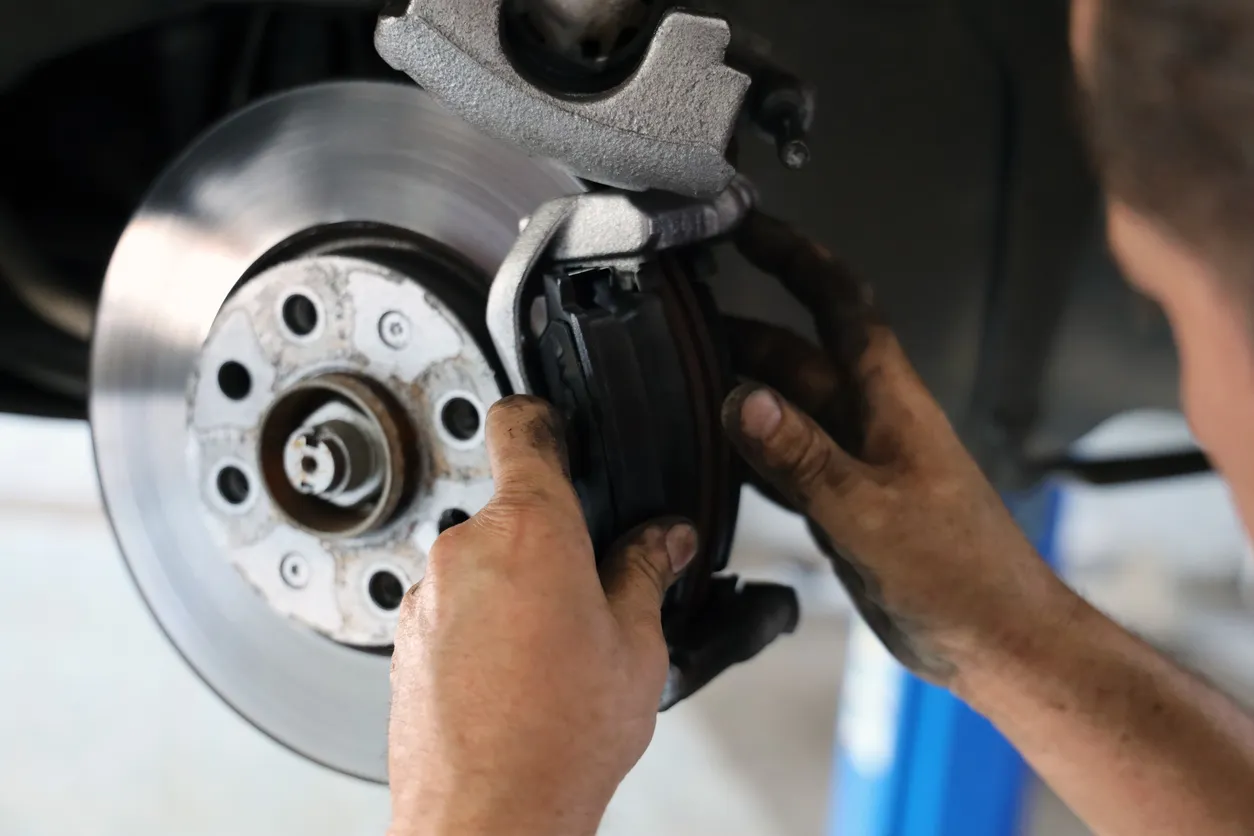How Do Car Brakes Work?

As a vehicle owner, have you ever wondered how car brakes work? It’s actually a very fascinating process. The brakes on your vehicle are essential for stopping your ride safely and effectively. The brake system on a car is made of many different parts that all work together to make stopping possible. There are a few different types of brake systems, and some vehicles have drum brakes while others have disc brakes, but the underlying principles are the same with both types. No matter what sort of brakes you have, the system likely works the same way to stop your vehicle.
Different Parts of Car Brakes
A brake system is made up of a brake pedal, a brake booster, a master cylinder, brake lines, brake pistons, brake drums or rotors, and friction material. When you ask ‘how do car brakes work?’, you are actually asking how all these parts work together.
Where Are the Brakes in a Car?
Car brakes are located at each wheel of the car. You'll find them right behind the wheels, usually covered by the wheel's metal rim. When you press the brake pedal, it sends a signal to the brakes, causing them to squeeze against the wheel's rotor or drum, which creates friction and slows down the car.
What Happens When You Press the Brake Pedal?
When you step down on the brake pedal, you're signaling to your vehicle that you want to stop. The pedal delivers pressure to the master cylinder, along with help from a brake booster to create the stopping force necessary to slow your vehicle. Once the pressure is at the master cylinder, it's distributed throughout your vehicle and used to deliver even stopping pressure.
Braking Force Is Spread to All Four Wheels
The pressure you generate because of the brake pedal and booster is distributed throughout your vehicle by the master cylinder. The cylinder creates hydraulic pressure in the brake lines that spread to each of the four wheels on your car or truck.
As the pressure reaches each wheel, it presses on a cylinder that activates the friction mechanism to stop your vehicle.
How Does Pressing on a Car Brake Stop the Vehicle?

It makes no difference whether you're driving a vehicle with drum brakes or disc brakes; each type uses a similar mechanism to slow the vehicle. When people try to imagine how car brakes work, they usually think about the final step in the braking process, where the pads or shoes press down and slow your vehicle.
If you have disc brakes, you have brake pads, and when you have drum brakes, you have brake shoes. Either way, these specialized friction pads are designed to rub against a smooth metal surface and create an incredibly high amount of friction. The brake pads get pressed into rotors that are attached to each wheel hub. As the pads press into the rotors by way of one or more pistons inside the caliper, the wheels slow down until the vehicle comes to a stop. On vehicles with drum brakes, the brake shoes are pressed outward due to the brake pressure, and they rub against the spinning brake drums that are attached to the wheels of the vehicle.
No matter if you have drum brakes or disc brakes, your vehicle relies on hydraulic brake pressure that comes from putting pressure on the brake fluid to force the specific brake material your vehicle uses onto spinning metal surfaces attached directly to the wheels of your vehicle. The process is nearly the same, though the parts on the wheels are different.
How Do Brakes Work on a Disc Brake Vehicle?
Most modern vehicles today come equipped with disc brakes. These brakes are easier to work on, and they are nearly as effective as the older-style drum brakes. Since your vehicle is more likely to have disc brakes than drum brakes, you should know how this style of brake works specifically.
Each brake system has a brake pedal, brake booster, a master cylinder, and brake lines throughout the vehicle, but a disc brake system uses different parts at each of the wheels to stop your vehicle.
At the wheel, you have a rotor that is attached to the wheel, and that spins when the wheel spins. This is the surface you'll press on to slow your vehicle. Rotors are usually made from steel, and sometimes they are slotted or drilled to help them cool faster.
The rotor is surrounded by a brake caliper that includes one or more pistons and a set of brake pads. The caliper presses the brake pads into both sides of your rotor using the pressure generated by the brake booster. When you stop pressing the brake pedal, the caliper retracts away from the rotor and relieves the friction on the rotor so it can spin freely once again. Disc brakes are simple to work on, and often you only have to replace the brake pads to restore reliable stopping power to your vehicle again.
How Do Brakes Work on a Drum Brake Vehicle?

Drum brakes are similar to disc brakes, but they utilize an enclosed design that keeps dust and debris out more effectively. Just like the rotors, drum brakes have spinning metal drums that rotate along with the wheels on the vehicle. If the drums are forced to slow down, they will slow the wheels down at the same time.
When pressure is sent through the brake line to one of the wheels equipped with drum brakes, the brake cylinders press the brake shoes outward into the rotating drums. The shoes scrape against the rotating drums and force them to slow down. Brake shoes generate tremendous stopping power, and this is why drum brakes are relied upon to stop most large trucks today. Just like with disc brakes, you will have to replace the friction material the most frequently. To maintain smooth braking performance, it's important to replace the brake shoes when they wear out, so make the replacement as soon as possible to get the stopping power you need to drive safely.
Now that you understand how the brakes on a car work, you should understand how to evaluate this brake system of a vehicle more effectively. The brake system of a car or truck is just one of the areas that you must inspect when considering making a new purchase. Learn how to understand brakes, and you will know how to inspect your new vehicle more closely.
You should also consider ordering a car history report to help you learn about past accidents, maintenance, and more details about any vehicle you are considering buying. Get all the information about your next car purchase from the car experts here at GoodCar, and you'll end up with a vehicle you can rely on.
FREE Vehicle Search
- Accidents
- Problem Checks
- Title Records
- Recalls
- Values
- Specs
-
InfoPay, Inc. (dba GoodCar) is an Approved NMVTIS Data Provider
-
-












































